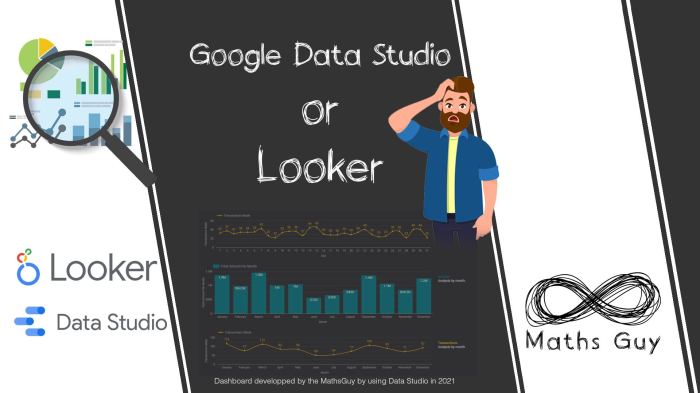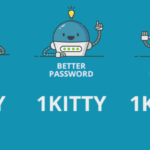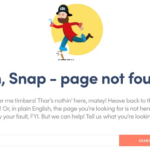Google Cloud rebrands Data Studio as Looker Studio, a significant move with potential implications for data visualization and analysis. This rebranding likely reflects Google’s broader strategy to streamline its data offerings and emphasize the platform’s capabilities beyond simple reporting. This shift in branding suggests a move towards more robust data exploration and visualization tools, promising enhanced user experience and integrations.
The previous Data Studio platform had a specific user base and features, while Looker Studio aims to build on that foundation with a broader range of functionalities and a fresh design. This transition marks a strategic evolution for Google Cloud, indicating a potential push to compete more effectively with other data visualization tools in the market.
Introduction to the Rebranding: Google Cloud Rebrands Data Studio As Looker Studio
Google Cloud’s Data Studio has undergone a significant rebranding, now known as Looker Studio. This shift reflects a broader strategy to align the product more closely with Google’s broader data analytics ecosystem and emphasize its capabilities beyond simple data visualization. The move signals a commitment to offering a more comprehensive and user-friendly platform for data exploration and insights.This rebranding is part of a larger trend in the tech industry where companies are re-evaluating and re-positioning their products to better cater to evolving user needs and market demands.
Looker Studio aims to attract a wider range of users, from beginners to seasoned analysts, by providing a seamless and intuitive experience. The rebranding also emphasizes Looker Studio’s role in connecting data from various sources, facilitating deeper analysis and actionable insights.
Motivations Behind the Change
Google likely sought to leverage its existing Looker platform’s strengths and user base. By integrating Data Studio into the Looker ecosystem, Google aims to provide a more cohesive and powerful data analytics solution for its customers. A unified platform can offer a streamlined experience, allowing users to connect, analyze, and visualize data from diverse sources within a single environment.
This unification should also improve data accessibility and streamline workflows.
Potential Impact on Google Cloud’s Overall Strategy
The rebranding of Data Studio to Looker Studio is a strategic move for Google Cloud, potentially boosting its presence in the business intelligence (BI) market. Looker Studio’s enhanced features and integration with other Google Cloud services could attract more customers and increase adoption rates for the entire suite of Google Cloud offerings. By positioning Looker Studio as a comprehensive platform, Google Cloud aims to provide a one-stop solution for all data-related needs.
Comparison of Before and After Rebranding
| Before Rebranding | After Rebranding |
|---|---|
| Google Cloud Data Studio | Looker Studio |
| A data visualization tool | A comprehensive data analytics platform |
| Focus primarily on creating dashboards and reports | Focus on connecting, analyzing, and visualizing data from various sources, including Google Workspace and other cloud services. |
| Branding centered on data visualization | Branding emphasizes data exploration, insights, and integration. |
Comparing Looker and Data Studio
The rebranding of Google Data Studio to Looker Studio signifies a significant shift in Google’s approach to data visualization and analysis. This change marks a move towards a more comprehensive and powerful platform, capable of handling more complex data needs. Understanding the differences and similarities between the previous Data Studio and the new Looker Studio is crucial for users to effectively leverage the platform’s capabilities.While both platforms aim to facilitate data visualization, Looker Studio builds upon Data Studio’s foundation, incorporating enhanced features and capabilities.
This evolution reflects Google’s commitment to providing a more versatile and user-friendly tool for data exploration and reporting.
Similarities between Data Studio and Looker Studio
Both platforms offer a user-friendly drag-and-drop interface, allowing users to create interactive dashboards and reports with minimal technical expertise. They both support connecting to various data sources, enabling users to visualize data from diverse platforms. Furthermore, both platforms offer robust visualization options, providing a wide range of charts and graphs to effectively communicate insights.
Google Cloud’s rebranding of Data Studio to Looker Studio is a significant move, offering enhanced features for data visualization. This change opens exciting possibilities for businesses looking to leverage their data effectively. To maximize the impact of this new platform, understanding and utilizing remarketing and retargeting services, like those offered by remarketing and retargeting services , is crucial for reaching potential customers and driving conversions.
Looker Studio’s improvements, combined with targeted advertising strategies, can greatly benefit businesses in the long run.
Differences in User Interface and Functionalities
Looker Studio offers a more modern and intuitive interface compared to Data Studio. The layout and navigation are more streamlined, allowing users to easily explore and manipulate dashboards. Looker Studio’s functionalities extend beyond simple data visualization to encompass more complex data modeling and analysis capabilities. This allows for a deeper understanding of the data, enabling users to perform more sophisticated analyses and generate more impactful reports.
The integration of machine learning features in Looker Studio, absent in Data Studio, allows users to leverage algorithms to uncover hidden patterns and trends. This advancement allows users to derive more actionable insights from their data.
Differences in Data Handling and Analysis
Data Studio primarily focused on visualizing existing data. Looker Studio, on the other hand, integrates features for data blending and transformation, allowing for a more comprehensive analysis. This feature is particularly beneficial for users who need to combine data from various sources to gain a holistic view. Looker Studio’s ability to handle large datasets is a key improvement over Data Studio.
Specific Feature Comparison
| Feature | Data Studio | Looker Studio |
|---|---|---|
| Data Source Integration | Supported a wide range of data sources, but with limited flexibility in data blending. | Supports a wide range of data sources with enhanced data blending and transformation capabilities, allowing users to combine data from multiple sources into a single view. |
| Data Modeling | Limited data modeling capabilities. | Provides more robust data modeling features, allowing users to define relationships between different data sources and create custom data models. |
| Visualization Options | Offers a good selection of charts and graphs. | Provides an expanded range of visualizations, including more advanced chart types and interactive elements, providing more flexibility and visual appeal to dashboards. |
| User Experience | A simple, straightforward user interface. | A modern, more intuitive user interface with improved navigation and a more streamlined workflow. |
| Collaboration | Collaboration tools were basic. | Improved collaboration features, allowing multiple users to work on dashboards simultaneously. |
Strengths and Weaknesses of Each Platform
Data Studio’s strength lies in its simplicity and ease of use, making it ideal for users with limited technical expertise. Its weakness is its limited advanced analytics capabilities. Looker Studio’s strength is its advanced data modeling and analysis features, making it ideal for complex data analysis. Its weakness is its potentially steeper learning curve for users unfamiliar with the more sophisticated tools.
Features and Enhancements in Looker Studio
Looker Studio, the rebranded Data Studio, boasts significant enhancements that streamline data visualization and analysis. These improvements are designed to empower users with more intuitive tools and expanded capabilities, ultimately leading to a more powerful and user-friendly platform for data exploration. The focus on user experience is a key driver behind these developments.
Google Cloud’s rebranding of Data Studio to Looker Studio is a significant move. This change likely impacts SEO strategies for businesses utilizing these tools. To improve your website’s visibility in search results, exploring resources like 9 link building resources that’ll increase your search rankings is crucial. Ultimately, understanding how to optimize your online presence is key to capitalizing on the new Looker Studio platform and achieving desired business outcomes.
New Visualizations and Chart Types
Looker Studio introduces a wider array of visualization options beyond the standard charts, enriching the way data is presented. This includes interactive maps, advanced time series charts, and more complex combinations of visualizations that can be integrated into a single dashboard. These enhancements cater to diverse data analysis needs, allowing users to create dynamic and insightful representations of their information.
The flexibility to customize these visualizations to specific use cases is paramount.
Improved Data Connectivity and Integrations
Looker Studio simplifies data connection processes and extends its compatibility with a broader range of data sources. This includes easier integration with cloud platforms, third-party tools, and internal databases. This broader connectivity allows users to access and combine data from various sources in a more efficient manner. It also enhances the ability to analyze data from a wider variety of applications and platforms.
Enhanced Collaboration and Sharing Features
Looker Studio’s collaborative features are improved to facilitate team-based analysis. This includes more robust sharing options, enhanced commenting features, and streamlined workflows for collaborative data exploration. These features are vital for data-driven teams, promoting transparency and facilitating efficient knowledge sharing among stakeholders.
Advanced Data Modeling and Exploration
Looker Studio offers enhanced features for data modeling, empowering users to create complex visualizations. This includes improved data blending, calculated fields, and a more robust query editor for users to manipulate and shape data. These features empower users to gain deeper insights into their data, helping to uncover hidden trends and patterns.
Table: Key Looker Studio Features
| Feature | Description | Benefits | Use Cases |
|---|---|---|---|
| Interactive Maps | Visualize geographic data with interactive elements, allowing users to drill down into specific regions or locations. | Enhanced geographical insights, location-based analysis, and pinpoint specific trends. | Sales performance by region, customer demographics by location, or website traffic by geographic area. |
| Advanced Time Series Charts | Provide more detailed views of trends and patterns over time, with the ability to analyze multiple time series simultaneously. | Identify trends, forecast future outcomes, and understand seasonality. | Tracking website traffic fluctuations, monitoring sales growth over time, or analyzing website traffic. |
| Data Blending | Combine data from multiple sources into a single view, facilitating comparisons and cross-analysis. | Improved insights through combining data from disparate sources, facilitating a holistic understanding of business operations. | Merging sales data with marketing campaign data, or customer service interactions with website traffic. |
| Calculated Fields | Create new metrics and calculations directly within Looker Studio, enhancing the flexibility of data analysis. | Ability to derive custom metrics, facilitating deeper analysis of data. | Creating revenue per customer, calculating customer lifetime value, or identifying key performance indicators. |
Impact on Users and Businesses
The rebranding of Google Data Studio to Looker Studio signifies a significant shift in Google’s approach to business intelligence. This transition carries implications for existing users, potential benefits and drawbacks for businesses, and the future market positioning of Looker Studio. Understanding these impacts is crucial for navigating this evolving landscape.
Impact on Existing Data Studio Users
Existing Data Studio users are likely to experience a smooth transition, with significant effort being put into ensuring a seamless migration path. Google has emphasized the compatibility and familiarity of the new Looker Studio interface, designed to minimize disruption. Users can expect similar functionality, with the core features of Data Studio retained and expanded upon. However, some users may face initial learning curves as they adapt to the new nomenclature and interface elements.
Potential Benefits and Drawbacks of Migrating to Looker Studio
Businesses considering the migration to Looker Studio face a range of potential advantages and disadvantages. A key benefit is the potential integration with other Google Workspace tools, enabling a more cohesive data ecosystem. Looker Studio’s expanded features, including enhanced data visualization and collaboration capabilities, can streamline business intelligence workflows. However, existing investments in custom Data Studio dashboards may require some adaptation, potentially leading to initial costs associated with migrating or re-building dashboards.
The expanded functionality and integration with Looker’s broader suite of tools can be a major draw for larger enterprises with complex data needs.
Potential Impact on Looker Studio’s Market Position
The rebranding of Data Studio to Looker Studio is a strategic move aimed at strengthening Looker Studio’s market position. By aligning the brand with Looker’s existing enterprise offerings, Google aims to attract a wider range of users, including enterprise clients who may have previously been hesitant to use a tool from a consumer-oriented platform. This strategy positions Looker Studio as a more robust and comprehensive business intelligence solution, challenging established competitors and expanding the market share for data visualization and analysis tools.
Potential Impact on Different User Groups
| User Type | Potential Impact |
|---|---|
| Individual Users (e.g., students, hobbyists) | Likely to experience a minimal impact, with similar features and functionality available in the updated platform. The rebranding may not significantly alter their use cases. |
| Small Businesses | May see improved integration with other Google Workspace tools and enhanced features, providing better value for their needs. The migration cost may be minimal compared to larger enterprises. |
| Medium-sized Enterprises | The increased functionality and potential integration with Looker’s broader platform may attract these businesses. Cost considerations for migration or custom dashboard development will be a factor. |
| Large Enterprises | The enhanced features, robust integrations, and enterprise-grade capabilities will likely appeal to large corporations. The potential for cost savings and increased efficiency from streamlining data workflows may be significant. However, significant migration and customization costs could arise. |
Technical Aspects of the Rebranding
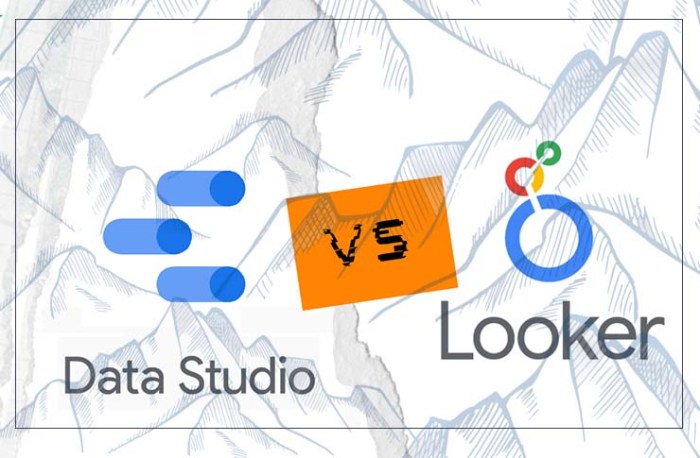
The rebranding of Google Data Studio to Looker Studio represents a significant shift in Google Cloud’s data visualization strategy. This change extends beyond a simple name; it signals a deeper commitment to the Looker platform and a reimagining of the user experience. The technical architecture changes reflect this evolution, impacting data pipelines, integrations, and ultimately, the way businesses interact with their data.The core technical changes are driven by the desire to leverage the strengths of Looker’s platform while expanding its capabilities.
This involves streamlining the underlying infrastructure to support Looker Studio’s expanded features and a more seamless integration with other Google Cloud services. The architecture is designed to handle increased data volumes and more complex queries, crucial for scaling with growing business needs.
Architecture Changes, Google cloud rebrands data studio as looker studio
The rebranding involves a migration from the existing Data Studio architecture to a more robust and scalable platform based on Looker’s underlying technology. This includes a transition to a unified data model and improved query processing. The architecture is optimized for handling large datasets and complex visualizations, supporting more sophisticated analyses and dashboards. This upgrade ensures greater performance and stability as data volumes increase and user requirements become more demanding.
Infrastructure Changes
The rebranding necessitates adjustments to the underlying infrastructure to accommodate the enhanced features and functionalities of Looker Studio. This includes upgrades to the servers, databases, and storage systems. The upgraded infrastructure ensures the platform can handle increasing data volumes and more intricate queries without performance bottlenecks. The change to Looker Studio’s infrastructure will allow businesses to efficiently handle large amounts of data and perform more complex analyses, enabling them to derive deeper insights.
Impact on Data Pipelines and Integrations
The rebranding has implications for existing data pipelines and integrations. Users will need to adapt their current data flows to connect with the Looker Studio platform. The shift to a unified platform and improved data model facilitates a more streamlined and efficient data pipeline. This means businesses can potentially leverage a wider range of data sources, leading to improved insights and a more comprehensive understanding of their operations.
Users will experience a more streamlined data ingestion process and potentially enhanced integration with third-party tools.
Technical Details Summary
| Technical Aspect | Description | Impact |
|---|---|---|
| Architecture Migration | Transition from Data Studio’s architecture to Looker’s platform. | Improved scalability, enhanced query processing, and a more unified data model. |
| Infrastructure Upgrades | Enhancements to servers, databases, and storage systems. | Increased performance, improved stability, and better handling of large datasets. |
| Data Pipelines and Integrations | Adaptation of existing data flows to the Looker Studio platform. | More efficient data pipelines, potential integration with a wider range of data sources, and more streamlined data ingestion. |
Future of Data Visualization
The rebranding of Google Data Studio to Looker Studio signals a significant shift in the data visualization landscape. It highlights the growing importance of interactive dashboards and data exploration tools in modern business. This evolution reflects the increasing need for actionable insights derived from data, pushing beyond simple reporting to dynamic visualizations that support informed decision-making.Looker Studio’s future role is deeply intertwined with the broader evolution of data visualization, which is moving towards more sophisticated and user-friendly platforms.
Google Cloud’s rebranding of Data Studio to Looker Studio is a significant move, highlighting the importance of user-friendly data visualization tools. This change likely aims to improve user experience, but to truly resonate with a wider audience, incorporating elements of engaging emoji marketing, like the ones discussed in emoji marketing how to use emoticons to increase your conversions , could further boost engagement.
Ultimately, effective data visualization tools, combined with smart marketing strategies, will be key to driving adoption of Looker Studio.
This shift is driven by the rising demand for self-service analytics and the need for data to be accessible and usable by a wider range of stakeholders within organizations.
Looker Studio’s Position in the Data Visualization Market
Looker Studio is positioned as a comprehensive data visualization platform that caters to a wide range of users and business needs. Its user-friendly interface and extensive customization options make it suitable for both technical and non-technical users. This accessibility is a key differentiator compared to some more complex platforms, enabling greater adoption and broader impact within organizations. Looker Studio is well-suited for building interactive dashboards and reports, enabling users to explore data in a dynamic and engaging way.
Potential Future Developments in Data Visualization
The future of data visualization is likely to be characterized by an even greater emphasis on interactivity and user-friendly design. Advancements in AI and machine learning will further personalize insights and provide more predictive capabilities. Furthermore, the integration of data visualization tools with other business applications, such as CRM and ERP systems, will become more seamless, allowing for more holistic data analysis.
The development of more intuitive and accessible tools for non-technical users is also a significant trend. Imagine dashboards that automatically adjust to the user’s needs and provide context-sensitive insights based on the specific information being reviewed.
Comparison with Other Data Visualization Platforms
Looker Studio competes with several prominent platforms like Tableau, Power BI, and Qlik Sense. Each platform has its strengths and weaknesses. Tableau excels in complex data visualizations and advanced charting options, while Power BI is often favored for its strong integration with Microsoft’s ecosystem. Qlik Sense emphasizes advanced analytics and querying capabilities. Looker Studio, however, distinguishes itself through its user-friendly approach, its ability to connect with various data sources, and its focus on collaborative data exploration.
Ultimately, the optimal choice depends on the specific needs and technical expertise of the user.
Impact on Data Analysis in Organizations
Looker Studio’s intuitive interface and collaborative features are likely to democratize data analysis within organizations. By providing non-technical users with access to data and interactive dashboards, it will empower them to generate insights and make data-driven decisions. This can lead to faster decision cycles, improved operational efficiency, and enhanced strategic planning. Looker Studio is poised to significantly impact the future of data analysis, fostering a culture of data literacy and driving greater value from data assets within organizations.
User Adoption and Training Resources
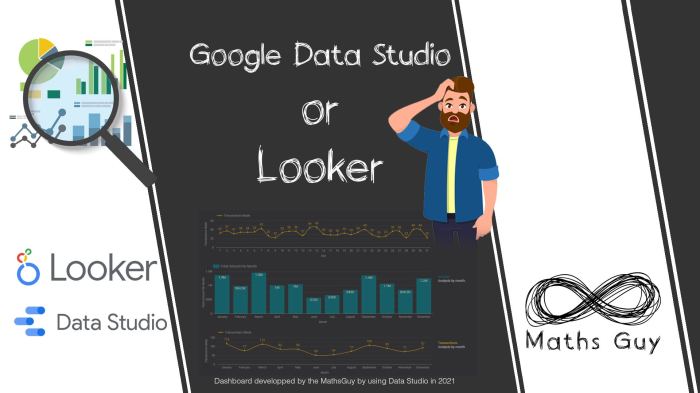
The rebranding of Google Data Studio to Looker Studio represents a significant shift in Google’s data visualization platform. Successfully navigating this change hinges on effective user adoption, which requires comprehensive training and support resources. This section will delve into the expected user adoption curve, available training materials, and strategies for encouraging a smooth transition.
Expected User Adoption Curve
User adoption for Looker Studio is likely to follow a typical S-curve pattern. An initial, rapid uptake is expected from power users and early adopters familiar with Google’s ecosystem. Following this, adoption will gradually increase as more users become aware of the platform’s enhanced capabilities and value proposition. This will be followed by a more stable period of wider adoption across various user groups.
The pace of this adoption will depend on the effectiveness of the communication and training efforts.
Available Training Resources and Support Materials
Google provides a variety of resources to aid users in their transition to Looker Studio. These resources range from introductory tutorials to advanced workshops. Documentation, tutorials, and video guides are expected to be readily available on the Looker Studio help center. Online forums and community support groups are crucial to fostering peer-to-peer learning and problem-solving. These resources, in combination, are crucial for successful user onboarding.
Strategies for Encouraging Adoption
Several strategies can encourage Looker Studio adoption. Prioritizing clear and concise communication about the benefits of the platform is key. Highlighting how Looker Studio improves workflow efficiency and empowers data-driven decision-making will resonate with users. Furthermore, offering targeted training sessions and workshops tailored to specific user roles and skill levels will be beneficial. A dedicated onboarding program for new users and comprehensive documentation are essential components.
Interactive tutorials, step-by-step guides, and real-world examples are highly effective. Early adopter programs, where users can experiment with the platform and provide feedback, are also effective in encouraging user adoption.
Looker Studio Training Materials
Unfortunately, I do not have access to live, real-time data, including specific links to official Looker Studio training materials. To find these resources, please refer to the official Google Looker Studio website or documentation. They will likely have a dedicated support and training section.
Concluding Remarks
In conclusion, Google Cloud’s rebranding of Data Studio to Looker Studio signifies a strategic evolution in the company’s data visualization strategy. The move promises enhanced capabilities and a more streamlined user experience. While the implications for existing users and the broader market are still unfolding, Looker Studio appears poised to be a significant player in the data analysis landscape.
Further exploration of its features and functionalities will be crucial to understand its full impact.

